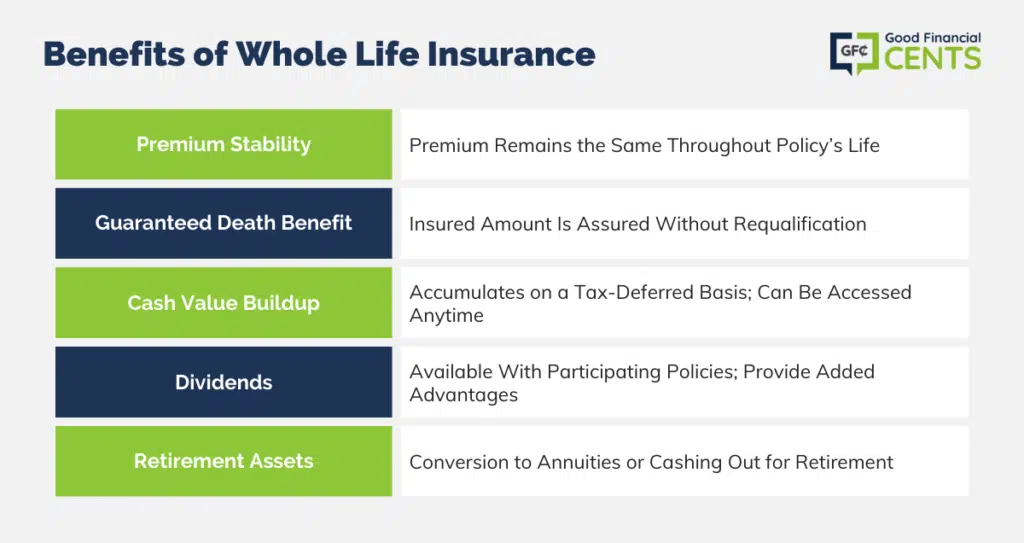Nerve Damage from Car Accidents
Car accidents can wreak havoc on the human body, leaving behind a trail of physical and emotional wreckage. Among the many injuries that can occur in a crash, nerve damage is one of the most insidious and debilitating. Unlike broken bones or lacerations that are visible to the naked eye, nerve damage can be hidden beneath the skin, making it difficult to diagnose and treat. However, the consequences of nerve damage can be profound, affecting everything from sensation to movement to overall quality of life.
Types of Nerve Damage
When a nerve is damaged, it can affect either the motor function (the ability to move muscles) or the sensory function (the ability to feel sensations). Motor nerve damage can result in weakness, paralysis, or loss of muscle control. Sensory nerve damage can cause numbness, tingling, burning, or shooting pain. Nerve damage can also affect the autonomic nervous system, which controls involuntary functions such as heart rate, blood pressure, and digestion.
Causes of Nerve Damage
Nerve damage in a car accident can occur in several ways. Blunt force trauma, such as a blow to the head or spine, can directly damage nerves. Bone fractures or dislocations can also put pressure on nerves, causing damage. In some cases, nerve damage can occur even if there is no visible injury to the body. This is because the force of the impact can stretch or tear nerves, even without causing any external damage.
Symptoms of Nerve Damage
The symptoms of nerve damage can vary depending on the type and severity of the injury. Common symptoms include:
- Pain, which can be sharp, burning, or aching
- Numbness
- Tingling
- Weakness
- Paralysis
- Loss of sensation
- Inability to control muscles
- Difficulty with balance and coordination
- Problems with bowel or bladder function
- Sexual dysfunction
Diagnosis and Treatment
Diagnosing nerve damage can be challenging, as there is no single test that can definitively identify the condition. Doctors will typically perform a physical examination, ask about the patient’s symptoms, and order imaging tests, such as X-rays, MRIs, or CT scans, to rule out other possible causes of the symptoms. Nerve damage can be treated with a variety of methods, including medication, physical therapy, and surgery. The goal of treatment is to relieve pain, improve function, and prevent further damage to the nerves.
Nerve Damage From A Car Accident: Understanding the Causes
Imagine being in a car accident, your body jolting violently from the impact. Amidst the chaos, you may not immediately notice the telltale signs of nerve damage. Yet, as the dust settles, subtle symptoms may emerge, hinting at an invisible injury that could profoundly impact your life. Nerve damage, a common consequence of car accidents, can manifest in a myriad of ways, affecting movement, sensation, and even bodily functions. To fully understand this condition and its potential long-term effects, it’s crucial to delve into the mechanisms behind nerve damage and explore the various scenarios that can lead to this debilitating injury.”>
Causes of Nerve Damage in Car Accidents
Nerve damage in car accidents typically arises from three primary culprits: trauma, compression, or stretching. Trauma, the most direct cause, occurs when nerves are subjected to a forceful blow or impact, such as the sudden jolt of a collision. This can result in immediate nerve damage, affecting the nerve’s ability to function properly. Compression, another potential cause, involves the application of prolonged pressure on nerves. This scenario can arise when the body is pinned against a hard surface, impairing nerve function and leading to persistent pain and discomfort. Finally, stretching, the third cause, happens when nerves are subjected to excessive elongation, often due to sudden movements or contortions associated with a car accident. This stretching can disrupt the nerve’s delicate structure, compromising its ability to transmit signals effectively.
The extent and severity of nerve damage can vary widely depending on the type, location, and severity of the trauma experienced during the accident. It’s important to seek medical attention promptly after a car accident, even if you don’t feel immediate symptoms. Nerve damage can sometimes manifest gradually, making early detection and diagnosis crucial for effective treatment and improved outcomes.
Types of Nerve Damage
Nerve damage can be classified into two primary types: sensory nerve damage and motor nerve damage. Sensory nerve damage affects nerves responsible for transmitting sensations such as touch, pain, and temperature. Motor nerve damage, on the other hand, impacts nerves that control muscle movement. Depending on the specific nerves affected, symptoms can range from numbness and tingling to weakness and paralysis.
Recognizing the Signs
The signs and symptoms of nerve damage can vary greatly depending on the type and severity of the injury. Some common signs include persistent pain, numbness, tingling, weakness, and difficulty with movement. It’s crucial to pay attention to any changes in sensation or function following a car accident and seek medical advice if these symptoms persist or worsen.
Nerve Damage: A Hidden Aftermath of Car Accidents
Car accidents are often harrowing experiences that can result in severe injuries. While broken bones and lacerations might be immediately apparent, nerve damage is often an insidious after-effect that can take days or even weeks to manifest. This damage, if left untreated, can have long-lasting consequences on a person’s quality of life.
Symptoms of Nerve Damage
Nerve damage can manifest in a myriad of ways. Some of the most common symptoms include:
- Constant pain that may feel sharp, throbbing, or burning
- Numbness and tingling sensations in the affected area
- Muscle weakness, making everyday tasks difficult
- Paralysis in severe cases
- Balance problems and poor coordination
Types of Nerve Damage
There are several different types of nerve damage, each with its own unique set of symptoms. Some common types include:
- Neuropraxia: This is the mildest form of nerve damage and usually occurs when a nerve is compressed or stretched. Symptoms include numbness and tingling, which typically resolve within a few weeks or months.
- Axonotmesis: This type of nerve damage is more severe and involves damage to the nerve’s axon, which transmits electrical signals. Symptoms include numbness, tingling, and weakness, which may or may not improve over time.
- Neurotmesis: This is the most severe type of nerve damage and occurs when the entire nerve is severed. Symptoms include complete loss of feeling and movement in the affected area, which is often permanent.
Causes of Nerve Damage
Nerve damage can be caused by a variety of factors, including:
- Traumatic injuries, such as car accidents
- Falls
- Repetitive motions
- Infections
- Metabolic disorders, such as diabetes
Treatment for Nerve Damage
Treatment for nerve damage depends on the severity of the injury and the type of nerve that is affected. Options may include:
- Rest and immobilization
- Physical therapy
- Occupational therapy
- Medication
- Surgery
Early diagnosis and treatment can improve the chances of recovering from nerve damage. If you have experienced a car accident or other traumatic injury, it is important to seek medical attention promptly to rule out nerve damage and begin treatment if necessary.
Nerve Damage: A Silent Suffering After a Car Wreck
When a car accident occurs, it’s not just the impact of metal on metal that causes harm. Sometimes, the unseen damage can be just as severe: nerve damage. Imagine your nerves as tiny electrical wires that transmit signals throughout your body. A car crash can sever or compress these wires, disrupting communication and causing a wide range of symptoms.
Diagnosis and Treatment of Nerve Damage
Diagnosing nerve damage isn’t always straightforward. Doctors rely on physical exams, medical history, and specialized tests like electromyography (EMG) and nerve conduction studies (NCS). Treatments vary depending on the type and severity of the injury. Medications can reduce pain and inflammation, while physical therapy helps restore nerve function. In more severe cases, surgery may be necessary to repair damaged nerves.
Types of Nerve Damage
There are three main types of nerve damage: sensory, motor, and autonomic. Sensory nerve damage affects your sense of touch, temperature, and pain. Motor nerve damage impairs movement and muscle control. Autonomic nerve damage disrupts involuntary functions like heart rate, digestion, and blood pressure.
Complications of Nerve Damage
Nerve damage can lead to a host of complications if left untreated. Chronic pain, numbness, and weakness are common. Additionally, autonomic nerve damage can cause serious health issues like heart problems, digestive disorders, and sexual dysfunction.
Prognosis and Prevention
The prognosis for nerve damage depends on the severity of the injury and the effectiveness of treatment. While some people make a full recovery, others may experience permanent nerve damage. Preventing nerve damage in a car accident is crucial. Always wear a seatbelt, drive defensively, and never drive under the influence of alcohol or drugs. If you’ve been in a car accident and suspect nerve damage, seek medical attention immediately. Ignoring the symptoms can worsen the injury and lead to long-term complications.
Nerve Damage: A Hidden Danger in Car Accidents
When Hank Thompson got into a car accident, initially, he just felt lucky to be alive. However, as the days turned into weeks, a throbbing pain began to shoot down his arm. The pain was so severe that he couldn’t work or sleep. Eventually, he was diagnosed with nerve damage, a common but often overlooked injury in car accidents. Nerve damage can cause a range of symptoms, from numbness and tingling to chronic pain and muscle weakness. In severe cases, it can even lead to paralysis.
Preventing Nerve Damage in Car Accidents
While car accidents are often unpredictable, there are steps you can take to minimize your risk of nerve damage. Here are a few important tips:
Wear Your Seatbelt
Seatbelts are the single most effective way to prevent serious injuries in a car accident. They help keep you in place and prevent your body from being thrown around the vehicle. This can help protect your spine and nerves from damage.
Adjust Your Seat Properly
Your seat should be adjusted so that your feet can reach the pedals comfortably and your knees are slightly bent. This will help keep your spine in a neutral position and reduce the risk of nerve damage in the event of an accident.
Avoid Distractions
Distracted driving is a major cause of car accidents. When you’re distracted, you’re more likely to make a mistake that could lead to an accident. Avoid talking on the phone, texting, or eating while driving. Instead, focus on the road and your surroundings.
Other Tips
In addition to the tips above, there are a few other things you can do to help prevent nerve damage in a car accident. These include:
- Keep your head and neck supported when you’re in a car accident. This will help prevent your head from being thrown forward and backward, which can damage your spine and nerves.
- If you’re involved in a car accident, seek medical attention as soon as possible. Even if you don’t feel any pain or discomfort, you may have sustained nerve damage that you’re not aware of.
- Follow your doctor’s instructions for treatment and rehabilitation. This will help you recover from your injuries and prevent further damage to your nerves.
- Pain
- Numbness
- Tingling
- Muscle weakness
- Paralysis
- Sensitivity to touch
- Burning or shooting pain
- Coldness in the affected area
- Changes in skin color
- Loss of sensation
- Medication to relieve pain and inflammation
- Physical therapy to improve range of motion and strength
- Occupational therapy to help you regain function
- Surgery to repair damaged nerves
By following these tips, you can help reduce your risk of nerve damage in a car accident. Remember, nerve damage is a serious injury that can have a lasting impact on your life. Don’t take it lightly. If you’ve been in a car accident, be sure to see a doctor as soon as possible to get checked for nerve damage.
Nerve Damage from Car Accidents: A Comprehensive Guide
After a car accident, life can change in an instant. One of the most devastating injuries that can occur is nerve damage. This type of injury affects the nerves, which are responsible for sending signals throughout the body. Damage to nerves can cause pain, numbness, tingling, muscle weakness, and even paralysis.
Nerve damage from a car accident can be caused by a variety of factors, such as the force of the impact, the location of the injury, and the type of nerve that is damaged. Nerve damage can be temporary or permanent, and treatment varies depending on the severity of the injury.
If you have suffered nerve damage in a car accident, it is important to seek medical attention as soon as possible. Early diagnosis and treatment can help to minimize the damage and improve your chances of recovery.
Symptoms of Nerve Damage
The symptoms of nerve damage can vary depending on the severity of the injury and the location of the damaged nerve. Some common symptoms include:
Nerve damage can affect any part of the body, but it is most common in the arms, legs, hands, and feet.
Treatment for Nerve Damage
Treatment for nerve damage depends on the severity of the injury and the location of the damaged nerve. Treatment options may include:
Legal Considerations
Nerve damage from a car accident may have legal implications, such as compensation for medical expenses and lost wages. If you have suffered nerve damage in a car accident, you should contact an attorney to discuss your legal options.
Conclusion
Nerve damage from a car accident can be a life-changing injury. However, with early diagnosis and treatment, you can improve your chances of recovery and regain your quality of life.




Leave a Reply